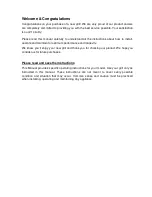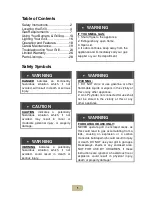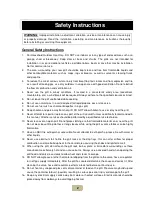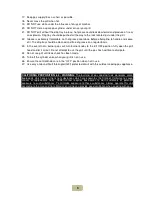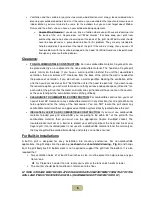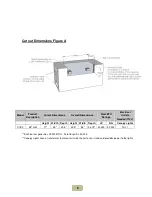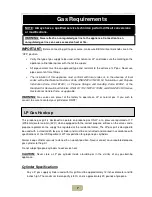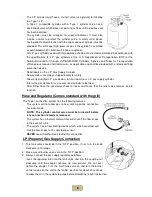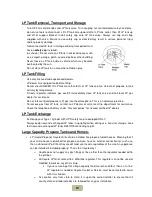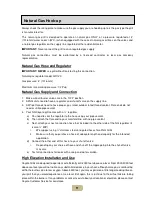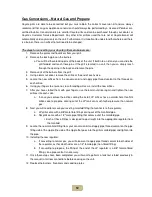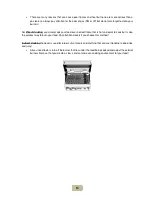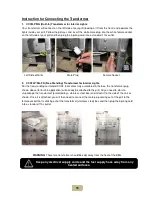
4
Check your local building codes for the proper method of installation. In the absence of local codes, this
unit should be installed in accordance with the
National Fuel Gas Code No. Z223.1-1998 USA
or
CAN/CGA-B149.1/.2 Natural Gas/Propane Code (Canada)
latest edition or the
National Electrical
Code ANSI/NFPA No. 70
or the
Canadian Electrical Code CSA C22.1, 1990
or latest version.
-
Before installing built-in grills in enclosures, copy all product information such as model number,
serial number and type of grill (e.g. natural gas or LP) and store information in a safe place.
-
If the grill is installed by a professional installer or technician, be sure that he shows you where
your gas supply shut-off is located. All gas lines must have a shut-off that is readily and easily
accessible. If you smell gas, check for gas leaks immediately. Check only with a soap and water
solution. Never check for gas leaks with an open flame.
Notice:
We strongly recommend professional installation and hookup of the Gas BBQ grill. These
instructions will provide you with the measurements necessary for you or your builder to construct a
masonry structure to house your outdoor gas grill.
IMPORTANT:
Gas fittings, regulator, and installer supplied shut-off valves must be easily accessible.
LOCATION OF YOUR GRILL:
Locate the grill only in a well ventilated area. Never locate the grill in a building, garage, breezeway,
shed or other such enclosed areas without an approved ventilation system. During heavy use, the grill
will produce a lot of smoke. Ensure there is adequate area for it to dissipate.
Ventilation Requirements for Proper Operation of your Coyote Grill
•
Ventilation for a gas grill is absolutely mandatory to ensure that your grill performs as intended and
to ensure the safety of you and your family. The vents that are required to honor a Coyote warranty,
not only ensure that any heat that is trapped inside your grill from environmental factors (such as
wind) escape but they also allow any gas that has leaked from a tank or connection, to escape
before a buildup of such gas can occur and possibly ignite.
•
A simple way to think of what is occurring inside your grill is that when your burners are on, they are
emitting a flame that creates the heat to cook your food. This heat must exhaust from the grill,
otherwise you would eventually have a unit that would not only build up immense heat but also
immense pressure. This could cause severe damage to not only the grill but any operators or
property near by. With that said, if you have wind coming into the back of your unit, the problem will
not be with the wind hitting your flames and causing them to push the flame downward. The problem
actually lies with the wind acting as a block for the exhaust, which is mainly out the back of the hood
(above the rear panel but below the top of the hood). This blockage of exhaust is what starts the
problems.
•
If the island is ventilated properly (with a minimum of 2 vents for cross ventilation and at least 20 sq
in on each vent) then any heat that is trapped inside due to wind should be able to dissipate out of
the island vents. However, if the island is not ventilated properly and the wind is coming from the
back, then the heat will try to escape through the easiest exit, which will most likely be through the
bottom of the grill and front control panel. This can cause the control panel and knobs to get hot to
the touch and possibly even burn your fingers, not to mention that it can melt all rubber gaskets on
the valves and damage the ignition system to where it will need full replacement.
Locating the Grill
Содержание C1C28LP
Страница 30: ...28 Coyote CCX2 Cart Parts List ...
Страница 31: ...29 Coyote CCX2 LP NG ...


